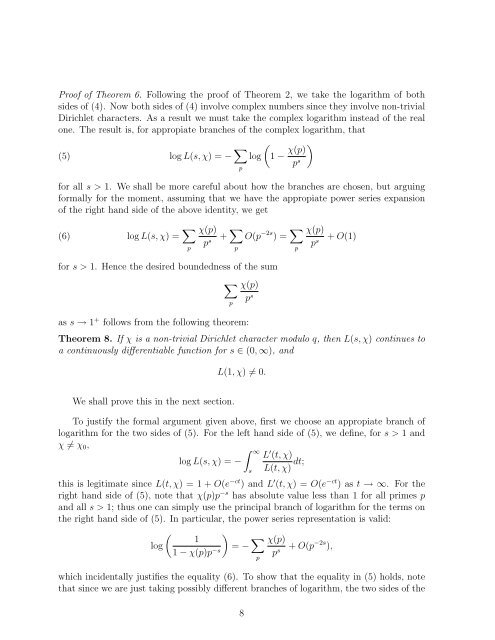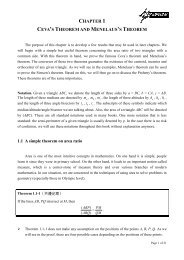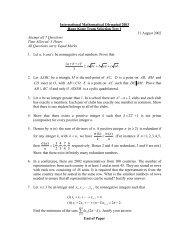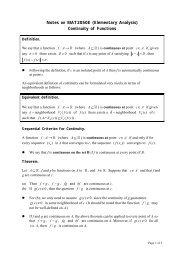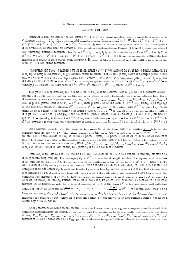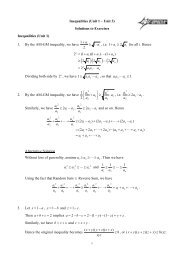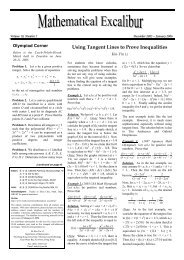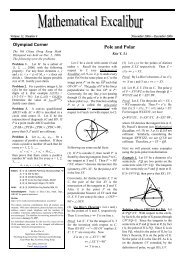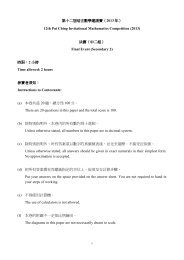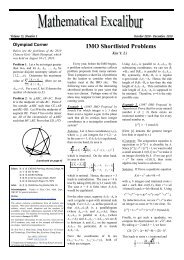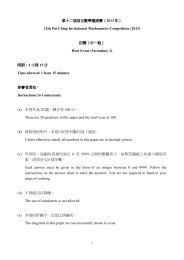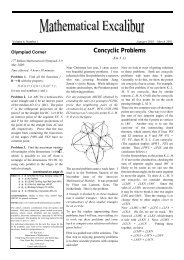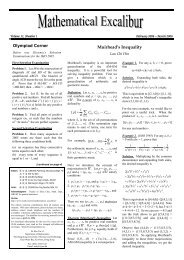An introduction to analytic number theory
An introduction to analytic number theory
An introduction to analytic number theory
- No tags were found...
Create successful ePaper yourself
Turn your PDF publications into a flip-book with our unique Google optimized e-Paper software.
Proof of Theorem 6. Following the proof of Theorem 2, we take the logarithm of bothsides of (4). Now both sides of (4) involve complex <strong>number</strong>s since they involve non-trivialDirichlet characters. As a result we must take the complex logarithm instead of the realone. The result is, for appropiate branches of the complex logarithm, that(5) log L(s, χ) = − ∑ (log 1 − χ(p) )p s pfor all s > 1. We shall be more careful about how the branches are chosen, but arguingformally for the moment, assuming that we have the appropiate power series expansionof the right hand side of the above identity, we get(6) log L(s, χ) = ∑ pχ(p)p s+ ∑ pO(p −2s ) = ∑ pχ(p)p s+ O(1)for s > 1. Hence the desired boundedness of the sum∑as s → 1 + follows from the following theorem:pχ(p)p sTheorem 8. If χ is a non-trivial Dirichlet character modulo q, then L(s, χ) continues <strong>to</strong>a continuously differentiable function for s ∈ (0, ∞), andL(1, χ) ≠ 0.We shall prove this in the next section.To justify the formal argument given above, first we choose an appropiate branch oflogarithm for the two sides of (5). For the left hand side of (5), we define, for s > 1 andχ ≠ χ 0 ,∫ ∞L ′ (t, χ)log L(s, χ) = −s L(t, χ) dt;this is legitimate since L(t, χ) = 1 + O(e −ct ) and L ′ (t, χ) = O(e −ct ) as t → ∞. For theright hand side of (5), note that χ(p)p −s has absolute value less than 1 for all primes pand all s > 1; thus one can simply use the principal branch of logarithm for the terms onthe right hand side of (5). In particular, the power series representation is valid:()1log= − ∑ 1 − χ(p)p −s pχ(p)p s + O(p −2s ),which incidentally justifies the equality (6). To show that the equality in (5) holds, notethat since we are just taking possibly different branches of logarithm, the two sides of the8


